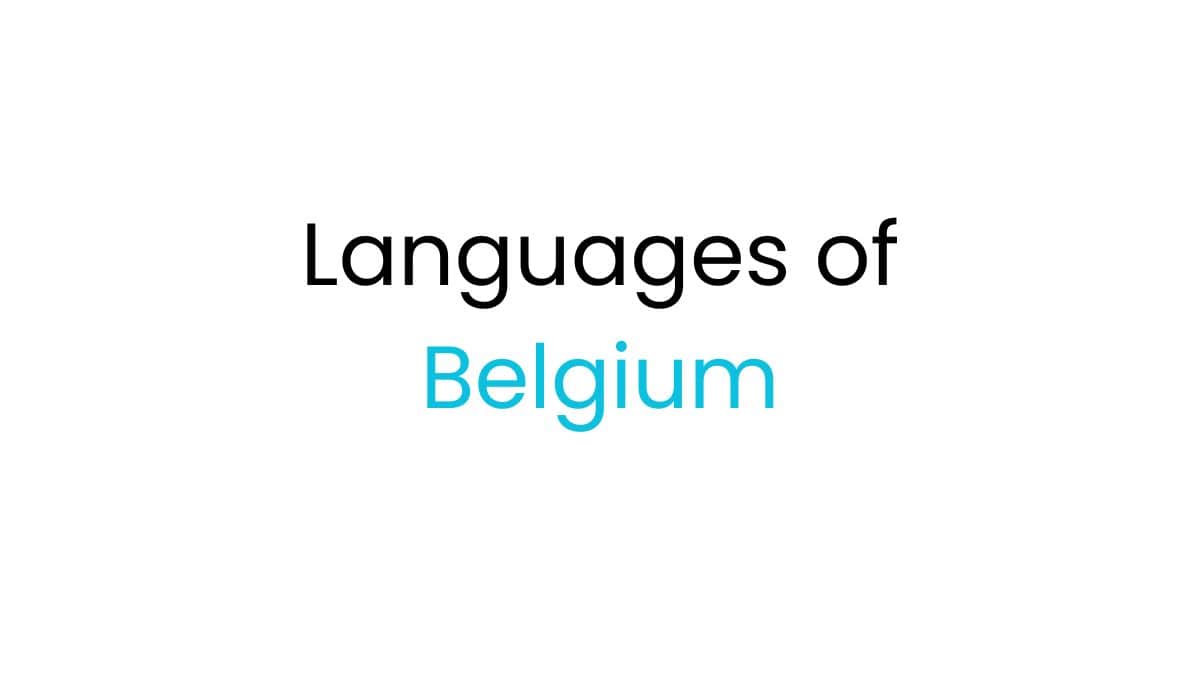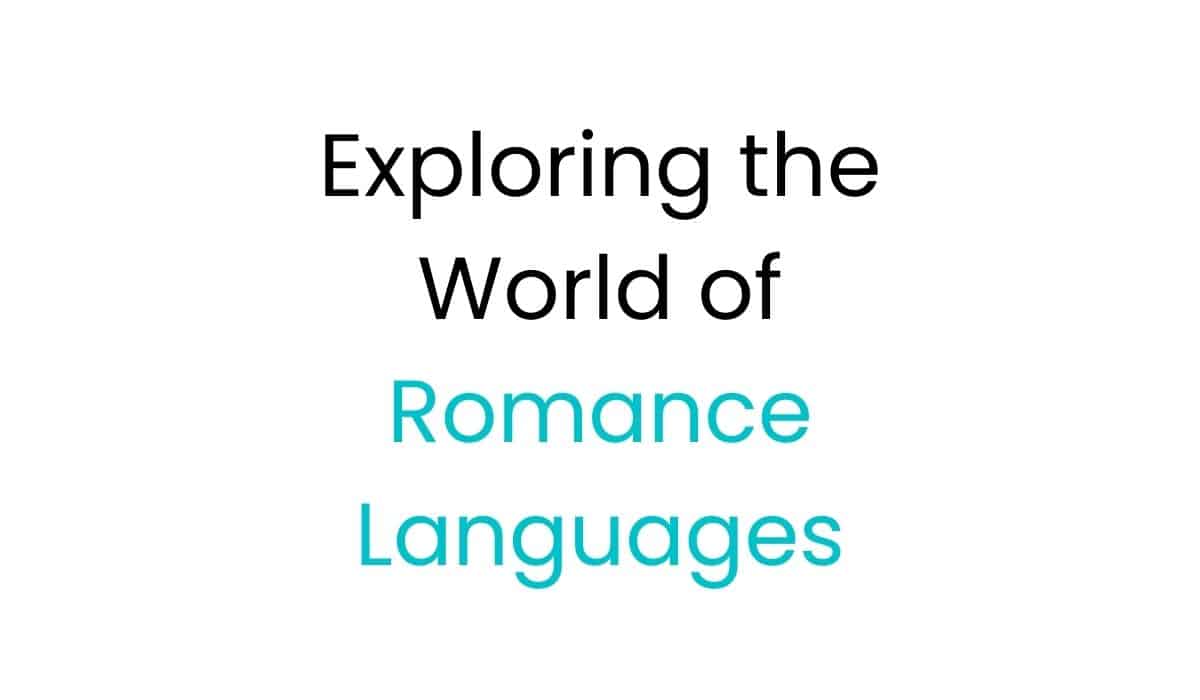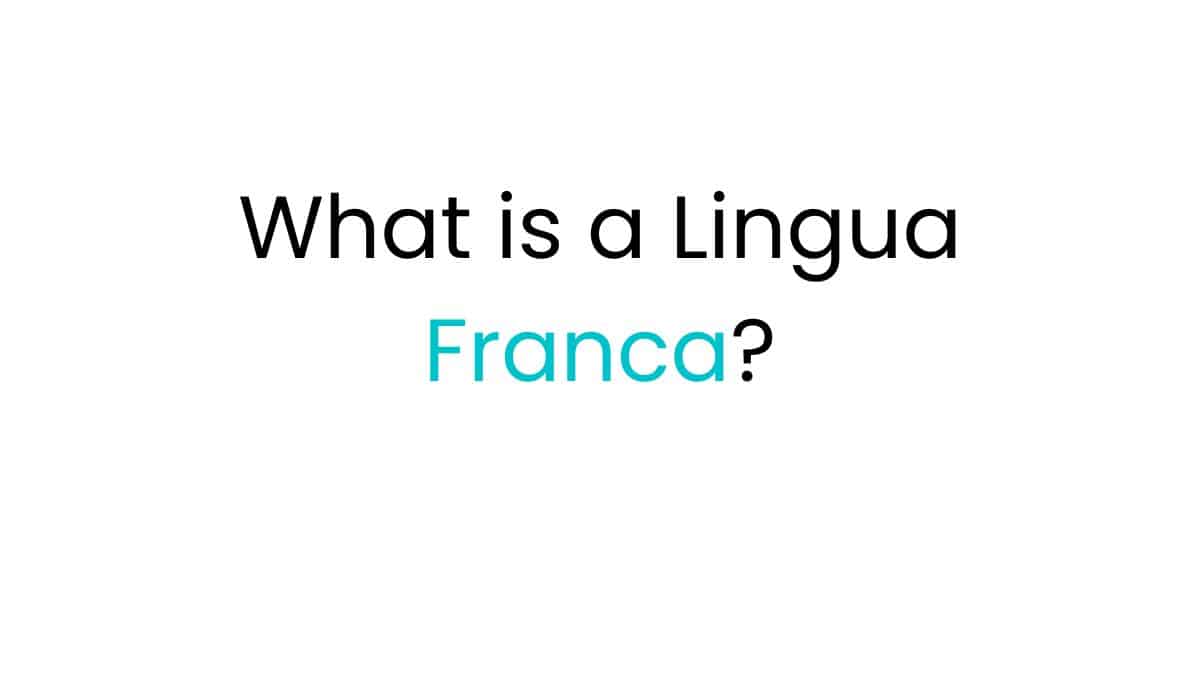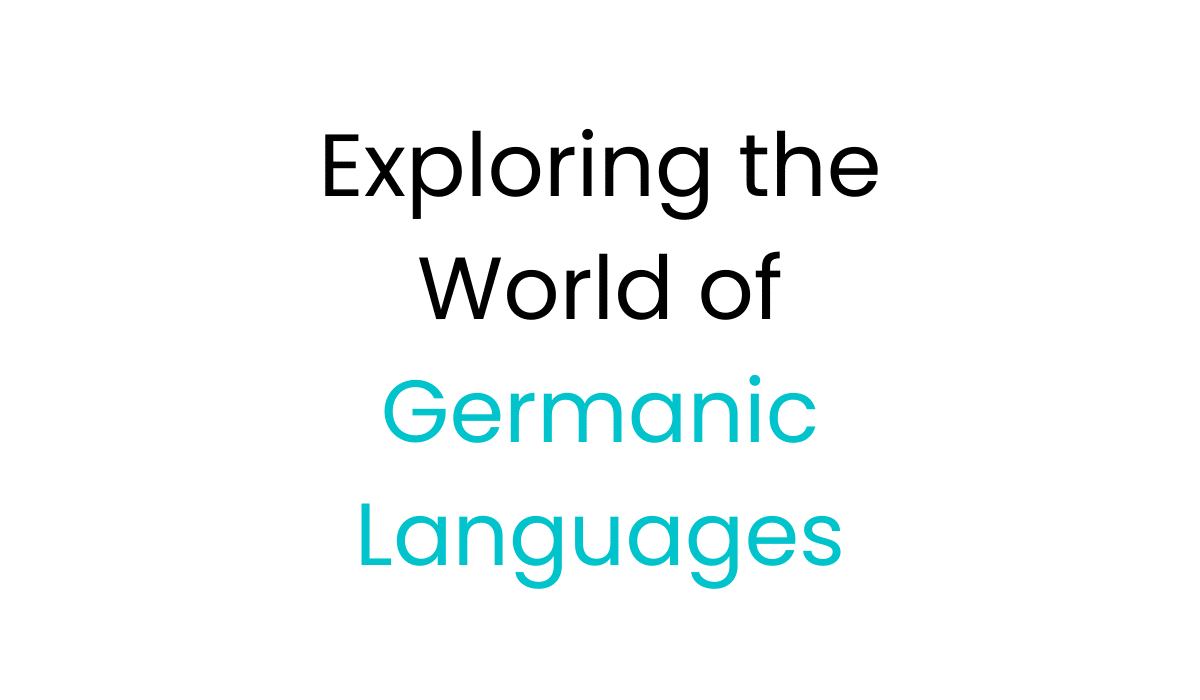Belgium is a small country in Western Europe known for its rich language diversity. It has three official languages: Dutch, French, and German. Each language has its own unique dialects and regional variations. This article will explore the origins, history, politics, and future of these languages in Belgium.

Key Takeaways
- Belgium is a multilingual country with three official languages: Dutch, French, and German.
- Approximately 60% of the Belgian population speaks Dutch, while around 40% speaks French.
- The Belgian Revolution in 1830 led to the establishment of French as the official language, despite the majority of citizens speaking Dutch.
- Regional dialects and minority languages, such as Flemish, Walloon, Picard, and Yiddish, add to the linguistic diversity of Belgium.
- Language politics and the Flemish movement have played a significant role in shaping the linguistic dynamics within the country.
- Key Takeaways
- Dutch: The Most Widely Spoken Language
- French: The Second Official Language
- Historical Influences and Rulers
- The Language Battle and Belgian Revolution
- Dutch in Flanders
- French in Wallonia
- German in the East Cantons
- Flemish Dialects
- Walloon and Picard
- Language Laws and Linguistic Regions
- Differences from Standard French
- What are the official languages of Belgium?
- What is the most widely spoken language in Belgium?
- What are the main linguistic regions of Belgium?
- What is the language situation in the capital city of Brussels?
- What other regional dialects and minority languages are spoken in Belgium?
- How do language laws and policies influence the linguistic landscape of Belgium?
- What is the Flemish movement and its impact on language equality in Belgium?
- How does Belgian French differ from the French spoken in France?
- How important is language learning in Belgium?
- What is the future of Belgium's linguistic diversity?
Belgium: A Multilingual Nation
Belgium is a unique country with a rich mix of languages. It has three official languages: Dutch, French, and German. This makes it a standout example of multilingualism.
Dutch: The Most Widely Spoken Language
Dutch, also known as Flemish (Belgian variation of Dutch language), is the top language in Belgium. About 59% of people, or 6.5 million, speak it. They live mainly in the northern region of Flanders.
French: The Second Official Language
French is the second most spoken language, with around 4.5 million native speakers. They live mostly in the southern Wallonia region. In Brussels, 50% speak French as their first language, and 45% use it as a second language.
The German-speaking Community in Belgium has about 77,000 people. They make up less than 1% of the population. They live mainly in the East Cantons region.
“Belgium is a truly multilingual nation, with Dutch, French, and German serving as the official languages. This linguistic diversity is a testament to the country’s rich cultural heritage and its ability to embrace and accommodate its diverse population.”
The way people speak in Belgium affects politics, education, and culture. Belgium’s mix of languages makes it a special place for language diversity.
The Origins of Belgium’s Linguistic Diversity
Belgium’s mix of languages has roots in its long history. It was once part of France, the Netherlands, and Germany. Each of these places left their mark on the languages spoken there.
Historical Influences and Rulers
The history of Belgium shows in its languages. More than half of Belgians are Flemish and speak Dutch. About one-third are Walloons, who speak French. A small group speaks German in the Liège province.
The Language Battle and Belgian Revolution
The fight over Dutch and French helped spark the Belgian Revolution of 1830. This led to Belgium becoming its own country. At first, French was the main language, but the Flemish movement pushed for Dutch to be recognized. This led to changes in language laws and the setup of language areas in Belgium.
| Language | Percentage of Population |
|---|---|
| Dutch | Approximately 60% |
| French | Around 40% |
| German | Small fraction |
Belgium’s language mix shows its deep history and cultural blend. From French being the main language early on to Dutch getting more recognition, Belgium’s language scene keeps changing. It shows the effort to make languages equal and honor the country’s diverse culture.
Languages of Belgium: The Three Official Languages
Belgium is a country with three official languages: Dutch, French, and German. These languages are spoken in different parts of the country. Each region has its own language and culture.
Dutch in Flanders
The northern part of Belgium is called Flanders. Most Belgians live here, and Dutch, or Flemish, is their main language. About 59% of Belgians speak Flemish Dutch every day. It’s used in schools, media, and daily life.
French in Wallonia
In the south, the region of Wallonia speaks French. Around 40% of Belgians speak French as their first language. Wallonia also has regional dialects like Walloon and Picard, making the country even more diverse.
German in the East Cantons
About 1% of Belgians speak German, living in the East Cantons. This area is near Germany and keeps its German culture and identity.
| Language | Primary Speakers | Secondary Speakers | Region |
|---|---|---|---|
| Dutch (Flemish) | 59% | 16% | Flanders |
| French | 40% | 49% | Wallonia |
| German | 1% | 22% | East Cantons |
Belgium’s mix of languages shows its deep history and cultural mix. This diversity affects the country’s schools, how people talk to each other, and its overall identity. Each region has its own special language and culture.
Bilingual Brussels: A Linguistic Melting Pot
Brussels is the capital where French and Dutch are both official languages. But, French is now more common, with 91% of people using it for taxes. This has caused tension between the Flemish and French-speaking communities. They want to keep Dutch alive in the Brussels Capital Region.
Brussels is a true mix of languages. About 33% of Brussels residents speak English well. The city also has many immigrant languages like Amazigh, Arabic, Spanish, Portuguese, Turkish, Italian, Greek, Polish, and English.
The mix of languages shows the complex language politics in Brussels. The French dominance has sparked debate. The Flemish community fights for more Dutch recognition. This debate affects the city’s culture and politics.
“The linguistic diversity in Brussels is a testament to the city’s rich cultural heritage and the challenges it faces in balancing the interests of its multilingual population.”
Being the seat of the European Union and a global center, Brussels’ language scene is always changing. It shows how the city is a linguistic melting pot in Belgium’s diverse language scene.
Regional Dialects and Minority Languages
Belgium is a country with three official languages: Dutch, French, and German. But it also has many regional dialects and minority languages. These add to the country’s unique culture and make it linguistically diverse.
Flemish Dialects
In the Flanders region, Flemish is the Dutch-based language spoken. It has many regional dialects that have changed over time. Brabantian and West Flemish are two main dialects, each with their own special words, sounds, and grammar rules.
These dialects show the variety within the Flemish-speaking community in Belgium.
Walloon and Picard
In the south of Belgium, the Walloon region has its own languages, like Walloon and Picard. These languages have mixed with French, giving it a special flavor. Walloon and Picard are minority languages but important for keeping the Walloon region’s language alive.
Belgium’s linguistic diversity shows its rich culture. With regional dialects and minority languages, it’s more than just the three official languages. This mix adds depth and character to Belgian life, showing the nation’s effort to keep its language heritage alive.
Language Politics and Governance
Belgium’s language diversity is complex and often debated. Language laws and dividing the country into linguistic regions are key to managing it. The country splits into three main areas – Flanders (Dutch), Wallonia (French), and the bilingual Brussels-Capital Region. Each area has its own political setup and language rules.
Language Laws and Linguistic Regions
In 1921, Belgium decided to be a bilingual country or have two language regions. It chose territoriality. The 1921 law set up language areas based on the most spoken language in each area. The 1962 law made each Belgian town stick to one language area, including Dutch, French, German, and Brussels-Capital’s bilingual status.
The 1962 law also helped minority languages by offering services in their language if they made up at least 30% of the town’s people. But the Peeters directive of 1997 made people ask for these services each time they needed them.
In 1970, Article 4 of the Belgian Constitution set the four language areas. These areas can only change with a special law. The National Railway Company of Belgium makes train information match the region’s language. This means announcements are in the language of the area the train is in.
| Language | Native Speakers in Belgium | Percentage of Total Population |
|---|---|---|
| Dutch | 6.1 million | Approximately 60% |
| French | 4.3 million | Approximately 40% |
| German | Over 75,000 | Less than 1% |
The Flemish Movement and Language Equality
The Flemish movement has been key in fighting for Dutch speakers’ rights in Belgium. It has worked hard for Dutch to be recognized as an official language. It also pushed for Dutch-speaking institutions and protecting linguistic rights. This fight for language equality has changed Belgium’s linguistic landscape and still affects its language politics.
In the late 19th century, the Flemish movement started to grow. The Flemish people wanted to stand up against French dominance in Belgium. Thanks to their efforts, the Equality Law was passed in 1898. This law made French and Dutch equal in the government. But, the fight for language equality didn’t stop there.
The Flemish movement got stronger during the Belgian Revolution in 1830. Many from the Flemish-speaking areas were among the dead and injured. This event showed the need for more linguistic rights and autonomy for the Flemish. After the revolution, the Dutch language was made official in Flemish-speaking Belgium. This made the Flemish people even more determined.
Over time, the Flemish movement has kept pushing for the Dutch language in Belgium. This has led to big changes, like Dutch-speaking universities and linguistic regions. Now, the Flemish Region is mostly Dutch-speaking.
The Flemish movement has deeply influenced Belgium’s language scene. As Belgium deals with its language politics, the Flemish movement keeps fighting for language equality. It aims to protect the Dutch language in Belgium.
Belgian French: Influences and Accents
Belgian French, spoken in Belgium, has a unique character. It’s different from French spoken in France. This language has been shaped by Belgium’s culture and history. It combines elements of Walloon, Picard, and Flemish dialects.
Differences from Standard French
Belgian French is similar to French spoken in France but has its own differences. These differences include unique sounds, words, and grammar. For example, Belgians pronounce /ɛ/ and /ɛː/ differently, and they use /i/ and /iː/ differently too.
They also use nasal vowels like /ɑ̃/ and /ɛ̃/ more often. This makes Belgian French stand out.
The language also has its own special words, called “Belgicisms.” Belgians say “septante” for “seventy” and “nonante” for “ninety.” They use words from local dialects, making their French richer and more diverse.
| Characteristic | Belgian French | Standard French |
|---|---|---|
| Numerals for 70 and 90 | Septante, nonante | Soixante-dix, quatre-vingt-dix |
| Vowel distinctions | Maintained /ɛ/ and /ɛː/, /i/ and /iː/ | Fewer distinctions between these vowel sounds |
| Nasal vowels | Prevalent use of /ɑ̃/ and /ɛ̃/ | Somewhat less emphasis on nasal vowels |
| Vocabulary | Incorporation of Walloon and Germanic-derived words | Standard French vocabulary |
These differences show Belgium’s rich culture and the lasting impact of local dialects on its language. Even though the differences are small, they make Belgian French unique. They add depth and color to the French spoken in Belgium.
Learning Languages in Belgium
In Belgium, language learning is key to everyday life. The country has three official languages: Dutch, French, and German. Learning these languages is a great challenge for both locals and newcomers.
The education system in Belgium focuses on teaching languages. Students must learn at least one official language besides their own. This helps with school and work and deepens cultural understanding.
Belgium has many language schools and resources. You can learn Dutch, French, or German, depending on what you want and can afford.
Places like the Alliance Française, Berlitz, and Goethe-Institut offer many language programs. You can choose from intensive courses, private tutoring, or conversation classes. These options help you improve your language skills for life in Belgium.
Belgium also has official language exams in Dutch, French, and German. Passing these exams shows your language skills and can help with school and work.
Learning languages in Belgium is a journey that enriches your life. It helps you understand the culture better, make new friends, and open up new career paths. It’s beneficial whether you’ve lived here a long time or are new.
The Future of Belgium’s Linguistic Landscape
Belgium is changing, and so is its language scene. The country values its language diversity, but this balance might change. Demographic shifts, political moves, and global trends could affect Belgium’s language mix in the future.
In Brussels, Dutch is becoming less common. Only 15% speak it as their first or second language. This drop is due to the city’s growing diversity, with many people from Morocco or Turkey.
The Flemish government wants to boost Dutch in Brussels. They hope to serve a third of the city with Flemish language services. This goal might be tough, considering the city’s language and people.
Brussels’ economic success has brought more Flemish workers. Over 250,000 now commute from the Flemish region. This adds to the language mix in the city.
As we look ahead, Belgium’s language scene will face challenges. The trends and diversity in languages will change. This will impact the country’s politics and culture.
| Statistic | Value |
|---|---|
| Percentage of Brussels population speaking Dutch | 15% |
| Percentage of Brussels population not born in Belgium | 60% |
| Percentage of Brussels population born in Belgium | 40% |
| Percentage of Belgian population speaking Dutch | 59% |
| Percentage of Belgian population speaking French | 40% |
| Number of German speakers in the German-speaking Community | 73,000 |
| Number of German speakers in neighboring municipalities | 23,000 |

Conclusion
Belgium’s mix of languages is a key part of its identity. It comes from a complex history, politics, and culture. Dutch is big in Flanders, French in Wallonia, and Brussels speaks both. This shows the country’s rich and complex culture.
The conclusion languages belgium show how Belgium deals with its many languages. It’s a story of diversity and change.
Belgium’s location and history have shaped its language mix. Over 59% speak Flemish Dutch, 40% French, and 1% German. This mix shows its complex past and present.
Regional dialects, language politics, and English’s growing role add to Belgium’s language scene. These factors make its language future dynamic.
Belgium’s language diversity is crucial to its identity. How it handles these languages will shape its future. The conclusion languages belgium tells a fascinating story of language and culture.
FAQ
What are the official languages of Belgium?
Belgium has three official languages: Dutch, French, and German.
What is the most widely spoken language in Belgium?
Dutch is the most spoken language in Belgium. About 60% of people, or 6.5 million, speak Dutch.
What are the main linguistic regions of Belgium?
Belgium is split into three main areas: Flanders (Dutch-speaking), Wallonia (French-speaking), and the bilingual Brussels-Capital Region.
What is the language situation in the capital city of Brussels?
Brussels is officially bilingual, with French and Dutch as official languages. But, French is now more common in the city.
What other regional dialects and minority languages are spoken in Belgium?
Besides the three official languages, Belgium has many regional dialects and minority languages. These include Flemish, Walloon, and Picard.
How do language laws and policies influence the linguistic landscape of Belgium?
Language laws and policies are complex in Belgium. They affect the country’s linguistic diversity and shape its language landscape.
What is the Flemish movement and its impact on language equality in Belgium?
The Flemish movement fights for Dutch speakers’ rights in Belgium. It has helped make Dutch an official language and created Dutch-speaking institutions.
How does Belgian French differ from the French spoken in France?
Belgian French has its own unique features. It includes elements from Walloon, Picard, and Flemish dialects. It also has special accents and words that show regional differences.
How important is language learning in Belgium?
Learning languages is key in Belgium. The education system focuses on language, making students learn at least one official language besides their own.
What is the future of Belgium’s linguistic diversity?
The future of Belgium’s languages is uncertain. Changes in population, politics, and globalization could affect the balance between official and regional languages.
Oualid Cheddadi is a language enthusiast who created Lingualid with the mission to inspire independent language learners worldwide, regardless of the language they are learning. The name “Lingualid” is derived from the Portuguese word for “language,” “língua,” and the last three letters of Oualid’s name, “Lid.”



